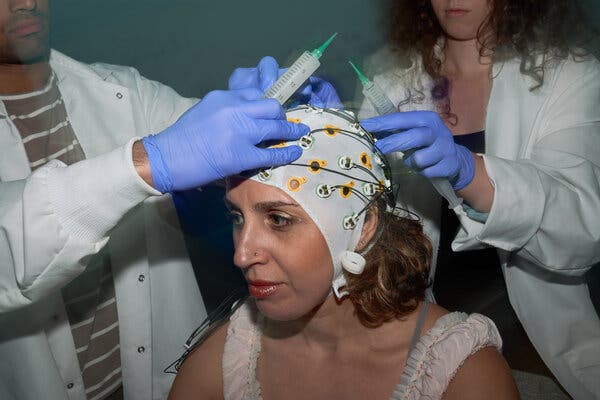How does an art of the body affect the mind?
“Epiphany Machine,” a performance that’s also a scientific study, paints a picture of the brain on dance — onstage and in data. Two dancers move through a simple sequence of steps while wearing electroencephalography caps, which track their brains’ electrical activity. Lab technicians monitor the caps’ data on laptops. And on a large screen, kaleidoscopic projections illustrate the performers’ brain activity for the audience, in real time.
Feathery fractal trees grow, branch and recede. Chains of numbers snake around in circles, turning blue, then black. It is beautiful and eerie: a pas de quatre for two dancers and their busy minds.
“Epiphany Machine,” performed last month at Virginia Tech, is a product of the young field of dance neuroscience, which explores dance’s unusual brain-body connection. Sophisticated imaging technology has helped reveal that dance’s multifaceted demands engage the mind as intensively as the body; that dance can root our minds more firmly in our physical selves; and that dancing together can help us relate to each other.
These are ideas that dancers grasp intuitively. Unsurprisingly, many scientists in the field are also dance artists, like Elinor Harrison, whose course on the neuroscience of movement at Washington University in St. Louis is subtitled “You Think, So You Can Dance?”
“The way dance integrates the mind and the body, that’s something I’ve felt myself,” Harrison said. “So when we see evidence of these things on a functional magnetic resonance imaging scan” — which measures blood flow in the brain — “it’s the science justifying this embodied knowledge dancers have.”
